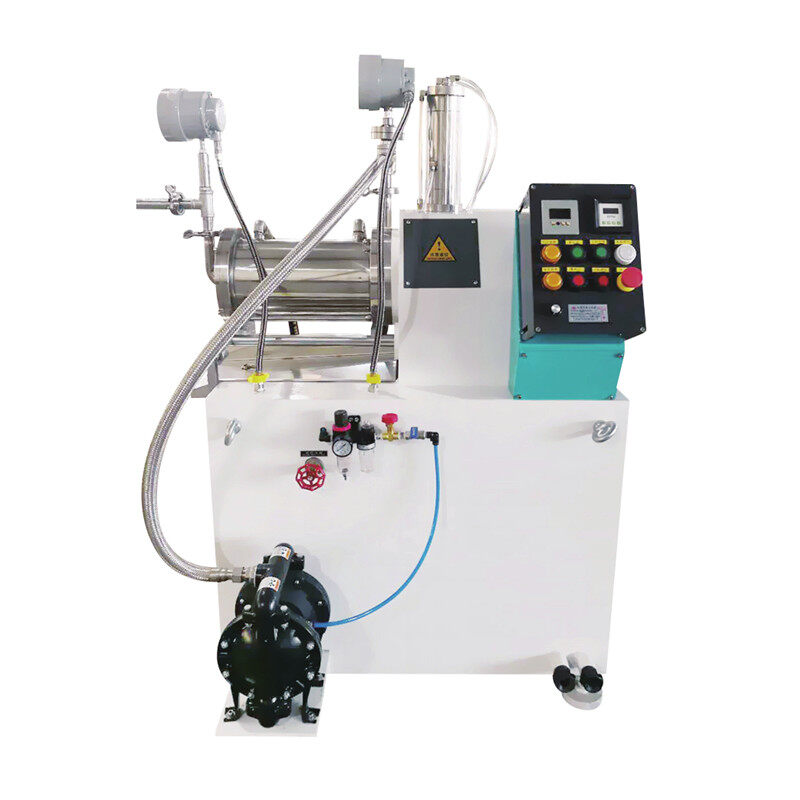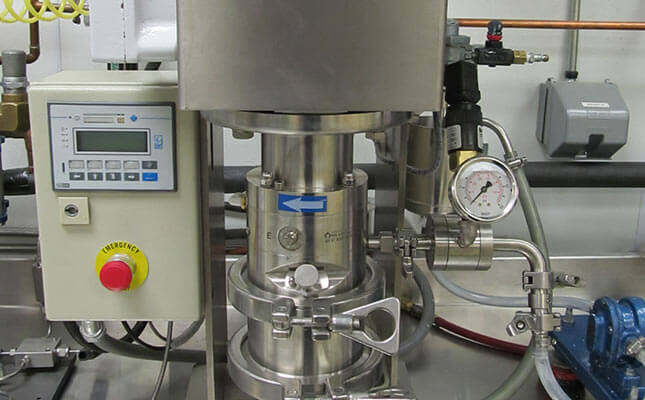Email cannot be empty
Password cannot be empty
Email format error
Email cannot be empty
Email already exists
6-20 characters(letters plus numbers only)
The password is inconsistent
Email format error
Email cannot be empty
Email does not exist
6-20 characters(letters plus numbers only)
The password is inconsistent


Bead Mill – Grinding & Dispersing
nano pigment bead mill

General knowledge of bead mill
The nano pigment bead mill is an apparatus that agitates grinding media (beads) in a cylindrical vessel to grind or disperse minute particles in slurry. The rotor of the mill generates bead motion, which induces intense shear force and impact on the particles. The bead mill is applied to a wide range of applications, such as grinding relatively large particles and dispersing nanoparticles. Particles of the size of microns or submicron are effectively reduced into finer particles as fine as tens of nanometers. Energy and impact force that materialize the best condition for each material are adjusted by optimizing the media size, rotor speed, and type of the rotor.
The importance of the size of the beads to be selected
The nano pigment bead mill size is the most important factor for milling practices. Large beads, bigger than 0.5 mm, are adequate for grinding micron-size particles into submicron-size ones. Small beads, 0.3 mm or finer, are applied to grinding or dispersing submicron- or nanometer-size particles. For dispersing, a large impact is not necessarily required, and, in addition, smaller beads provide faster processing rates since frequency of contact between a bead and a particle increases. In particular:
1) The adequate impact energy for milling, which is controlled by the bead size, rotor speed, and mass of the beads charged in the mill, is determined according to the target size and hardness of the particles.
2) The frequency of the impact between a bead and a particle, which is controlled by the rotor speed and bead size, affects the processing rate.
3) The inter-bead space affects the final size of particles after milling. The size of the inter-bead space is proportional to that of beads, so that smaller beads provide more chances for contacting the finer particles. Note that the inter-bead space is the space surrounded by beads when beads are closely packed.
Bead selection in grinding processing
In case of grinding large or hard particles, it is necessary to apply high impact energy to the particles. Since the intensity of energy is determined by the mass and speed of beads, large beads with a high speed are needed for grinding large and/or hard particles. When grinding hard particles, such as silica, alumina, and hard natural ores, relatively large beads—larger than 0.3 mm—are used as a grinding medium.
However, large nano pigment bead mill are not always suitable for grinding processing. The size of the beads affects the final size of the particles. In case of grinding minute particles, as of 200 nm or finer, beads of the size of 0.1 or 0.3 mm are applied for grinding processing.
In addition, smaller beads shorten the processing time because their wider surface area increases the frequency of impact between beads and particles. Accordingly, if the particles are soft and then the required impact energy is low, milling with smaller beads results in a faster processing rate. Examples of such soft particles are calcium carbonate, iron oxide, agrochemicals, and pharmaceutical chemicals. In case of grinding fine particles of the size of 200 nm or smaller, the selection of beads’ size is quite important. Since the inter-bead space among larger beads is larger, opportunities for the particles to come into contact with the beads are fewer, resulting in poor grinding efficiency. Therefore, processing practice using small nano pigment bead mill is required for grinding fine particles.
If you are looking for a bead mill,sand mill,bead mill supplier, we hope we will be your best choice.

